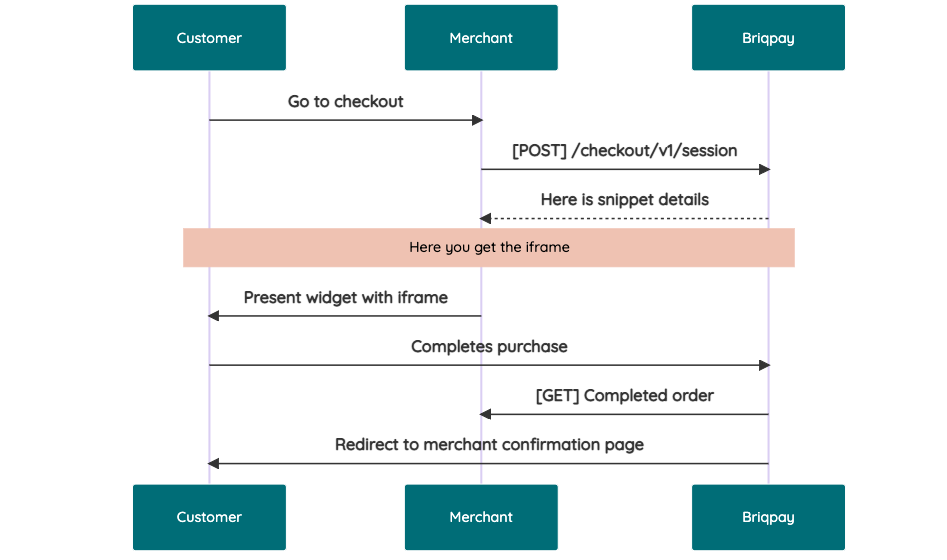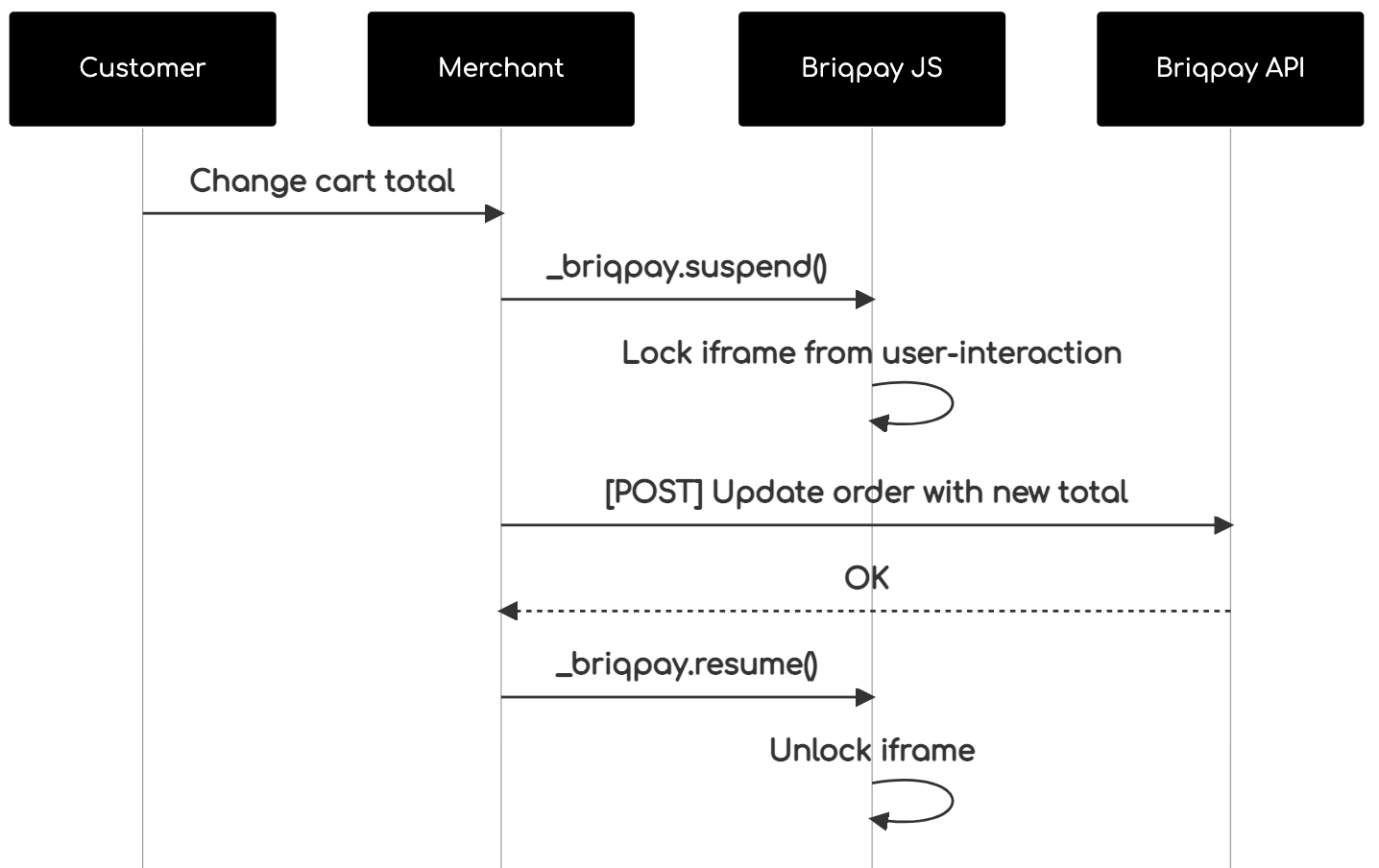Libraries tagged by high order
dgame/php-iterator
104972 Downloads
php iterator
dsheiko/extras
3230 Downloads
Collection of chainable high-order functions to abstract and manipulate PHP types
phpfn/pipe
97 Downloads
Library for implementing function call chains
serafim/pipe
105 Downloads
Library for implementing function call chains
briqpay/php-sdk
10773 Downloads
This is the API documentation for Briqpay. You can find out more about us and our offering at our website [https://briqpay.com](https://briqpay.com) In order to get credentials to the playgrund API Please register at [https://app.briqpay.com](https://app.briqpay.com) # Introduction Briqpay Checkout is an inline checkout solution for your b2b ecommerce. Briqpay Checkout gives you the flexibility of controlling your payment methods and credit rules while optimizing the UX for your customers # SDKs Briqpay offers standard SDKs to PHP and .NET based on these swagger definitions. You can download them respively or use our swagger defintitions to codegen your own versions. #### For .NET `` Install-Package Briqpay `` #### For PHP `` composer require briqpay/php-sdk `` # Standard use-case As a first step of integration you will need to create a checkout session. \n\nIn this session you provide Briqpay with the basic information necessary. In the response from briqpay you will recieve a htmlsnippet that is to be inserted into your frontend. The snippet provided by briqpay will render an iframe where the user will complete the purchase. Once completed, briqpay will redirect the customer to a confirmation page that you have defined.  # JavaScript SDK The first step of integration is to add our JS to your site just before closing the ```` tag. This ensures that our JS library is avaliable to load the checkout. ```` Briqpay offers a few methods avaliable through our Javascript SDK. The library is added by our iframe and is avalable on ``window._briqpay`` If you offer the posibility to update the cart or order amonts on the checkout page, the JS library will help you. If your store charges the customer different costs and fees depening on their shipping location, you can listen to the ``addressupdate``event in order to re-calculate the total cost. ```javascript window._briqpay.subscribe('addressupdate', function (data) { console.log(data) }) ``` If your frontend needs to perform an action whe the signup has completed, listen to the ``signup_finalized`` event. ```javascript window._briqpay.subscribe('signup_finalized', function (status) { // redirect or handle status 'success' / 'failure' }) ``` If you allow customers to change the total cart value, you can utilise the JS library to suspend the iframe while you perform a backen update call towards our services. As described below:  The iframe will auto-resume after 7 seconds if you dont call ``_briqpay.resume()`` before # Test Data In order to verify your integration you will neeed to use test data towards our credit engine. ## Company identication numbers * 1111111111 - To recieve a high credit scoring company ( 100 in rating) * 2222222222 - To test the enviournment with a bad credit scoring company (10 in rating) ## Card details In our playground setup your account is by default setup with a Stripe integration. In order to test out the card form you can use the below card numbers: * 4000002500003155 - To mock 3ds authentication window * 4000000000000069 Charge is declined with an expired_card code. You can use any valid expiry and CVC code # Authentication Briqpay utilizes JWT in order to authenticate calls to our platform. Authentication tokens expire after 48 hours, and at that point you can generate a new token for the given resource using the ``/auth`` endpoint. - Basic Auth - only used on the auth endpoint in order to get the Bearer Token - JWT Bearer Token - All calls towards the API utlizes this method"
enalquiler/instanciate
6383 Downloads
A high order function to instanciate classes passing parameters
akeneo-labs/data-generator-bundle
2086 Downloads
Akeneo PIM Bundle to generate data in order to test high volume operations
akeneo/data-generator-bundle
94 Downloads
Akeneo PIM Bundle to generate data in order to test high volume operations
phpfn/placeholder
66 Downloads
Simple placeholder implementation for functional constructions
serafim/placeholder
255 Downloads
Simple placeholder implementation for functional constructions
phayne-io/phunctional
16 Downloads
Phunctional is a little library that tries to bring to PHP some aspects of functional programing with util high order functions and functions for manage iterables.
hejunjie/id-generator
1 Downloads
轻量级 PHP ID 生成器,提供雪花算法、UUID、时间戳和自定义可读 ID 等多种策略,确保全局唯一性与高并发性能,可轻松集成到任何 PHP 项目,适用于订单号、资源标识、日志追踪等多种业务场景 | A lightweight PHP ID generator supporting Snowflake, UUID, timestamp, and custom readable ID strategies. Ensures global uniqueness and high-performance, easily integrable into any PHP project, suitable for order numbers, resource identifiers, log tracking, and various other business scenarios
eciboadaptech/finapi-webform
343 Downloads
The following pages give you some general information on how to use our APIs.The actual API services documentation then follows further below. You can use the menu to jump between API sections.This page has a built-in HTTP(S) client, so you can test the services directly from within this page, by filling in the request parameters and/or body in the respective services, and then hitting the TRY button. Note that you need to be authorized to make a successful API call. To authorize, refer to the 'Authorization' section of Access, or in case you already have a valid user token, just use the QUICK AUTH on the left.Please also remember that all user management functions should be looked up in Access.You should also check out the Web Form 2.0 Public Documentation as well as Access Public Documentation for more information. If you need any help with the API, contact [email protected] informationRequest IDsWith any API call, you can pass a request ID via a header with name "X-Request-Id". The request ID can be an arbitrary string with up to 255 characters. Passing a longer string will result in an error.If you don't pass a request ID for a call, finAPI will generate a random ID internally.The request ID is always returned back in the response of a service, as a header with name "X-Request-Id".We highly recommend to always pass a (preferably unique) request ID, and include it into your client application logs whenever you make a request or receive a response(especially in the case of an error response). finAPI is also logging request IDs on its end. Having a request ID can help the finAPI support team to work more efficiently and solve tickets faster.Type CoercionIn order to ease the integration for some languages, which do not natively support high precision number representations, Web Form 2.0 API supports relax type binding for the openAPI type number, which is used for money amount fields. If you use one of those languages, to avoid precision errors that can appear from float values, you can pass the amount as a string.FAQIs there a finAPI SDK?Currently we do not offer a native SDK, but there is the option to generate an SDKfor almost any target language via OpenAPI. Use the 'Download SDK' button on this page for SDK generation.Why do I need to keep authorizing when calling services on this page?This page is a "one-page-app". Reloading the page resets the OAuth authorization context. There is generally no need to reload the page, so just don't do it and your authorization will persist.